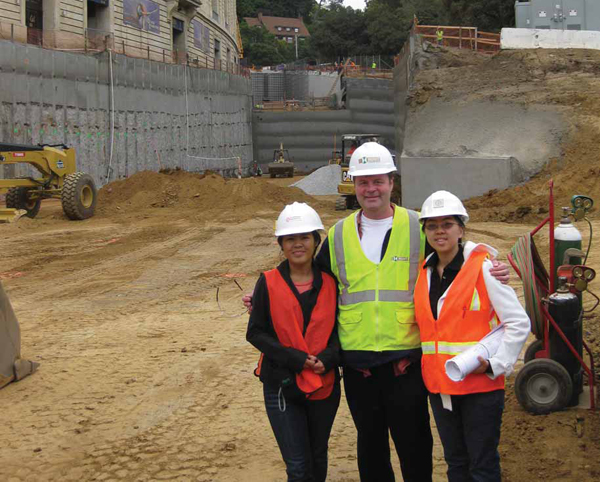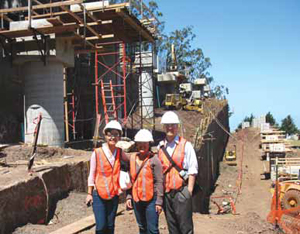
While the big push toward integrating project delivery centers on shared modeling using BIM, the art of collaboration is not taught at a terminal. Nor is it covered in the architectural curriculum. Relationships may be aligned in contractual cooperation, but the professional paths, traditionally independent and easily adversarial, still remain familiar.
In training for the next generation, insights into the goals and challenges of other AEC team members will grow in importance, complementing insights into software. How are such skills taught and honed?
A structural engineering firm, San Francisco based Forell/Elsesser, has been conducting an intern experiment that shows promise. President and CEO Simin Naaseh had the goal of developing an internship program that would be in tandem with the firm’s increasing IPD projects. Her idea was to rotate interns within the offices of owners, architects, engineers, and contractors, one month in each—a program that Forell/Elsesser terms Integrated Skill Development (ISD).
The pilot program was started in the summer of 2009. At that time, the engineering firm was part of a project team, with SmithGroup Architects and DPR Construction, working on the $119 million, 80,000-sq.ft. University of California, San Francisco (UCSF) Institute for Regeneration Medicine, designed by New York architect Rafael Viñoly. This project seemed ideal for launching this new internship program, as it would be an extension of the project’s delivery process.
Forell/Elsesser contacted the other team members about sharing interns. The firm began interviewing civil and structural engineering students from top schools in the Bay Area, asking if they would be interested in splitting their time between two or three offices during the summer. “All showed great interest and excitement, and this encouraged us,” recalls Naaseh.

Participating team members approved each chosen student. Each office designated a contact person who helped in the coordination of four-week stints, and each paid for “their” month of intern time.
“Our aim was not to send an engineering student to the contractor’s or architect’s office to sit in front of the computer there,” explains Naaseh. “This is not just about BIM, but about learning skills, aptitudes, and an understanding of developing and delivering a project as a whole.” Interns did indeed develop an appreciation of all team members’ issues and concerns. Nathan Cannery, engineering intern from Stanford University, wrote the following:
This internship experience allowed me to gain a more rounded perspective of the whole development process, from conception, through bidding, design, construction, and move-in. This larger vision will help me in my interactions with the other project disciplines in my future work. Also, working at Nova (UCSF’s project representative) provided me with the owner’s perspective, which surely doesn’t center on the structural system! Who would have guessed?
“To have engineering students ‘walk’ in the shoes of an architect or owner or contractor allows them to understand concerns and perspectives that are essential for truly collaborative and seamless working relationships,” believes Naaseh. “I’m excited about the opportunity to contribute to the broader education of the next generation of AEC leaders. Of course, this means that we will be expanding the program and taking on architectural and construction management students here next summer. Through this process, even we veterans will learn more about what it takes to go from a silo-based to a more integrated practice.”
Of course, there were a few differences along the way that needed to be “integrated.” It was decided that all the interns should be paid the same, no matter whose office they worked in, for fairness. The architects, it turns out, normally pay their interns less than the engineers. “We all have to be flexible in order to accomplish the bigger goal,” explains Simin about their finding a wage compromise.
Author Dorit Fromm, AIA, writes and researches on design, community and aging. Her writings have appeared in local, national and international publications, and she is the author of Cohousing, Central Living and Other New Forms of Housing.
Originally published 4th quarter 2009 in arcCA 10.1, “Parametrics and IPD.”





